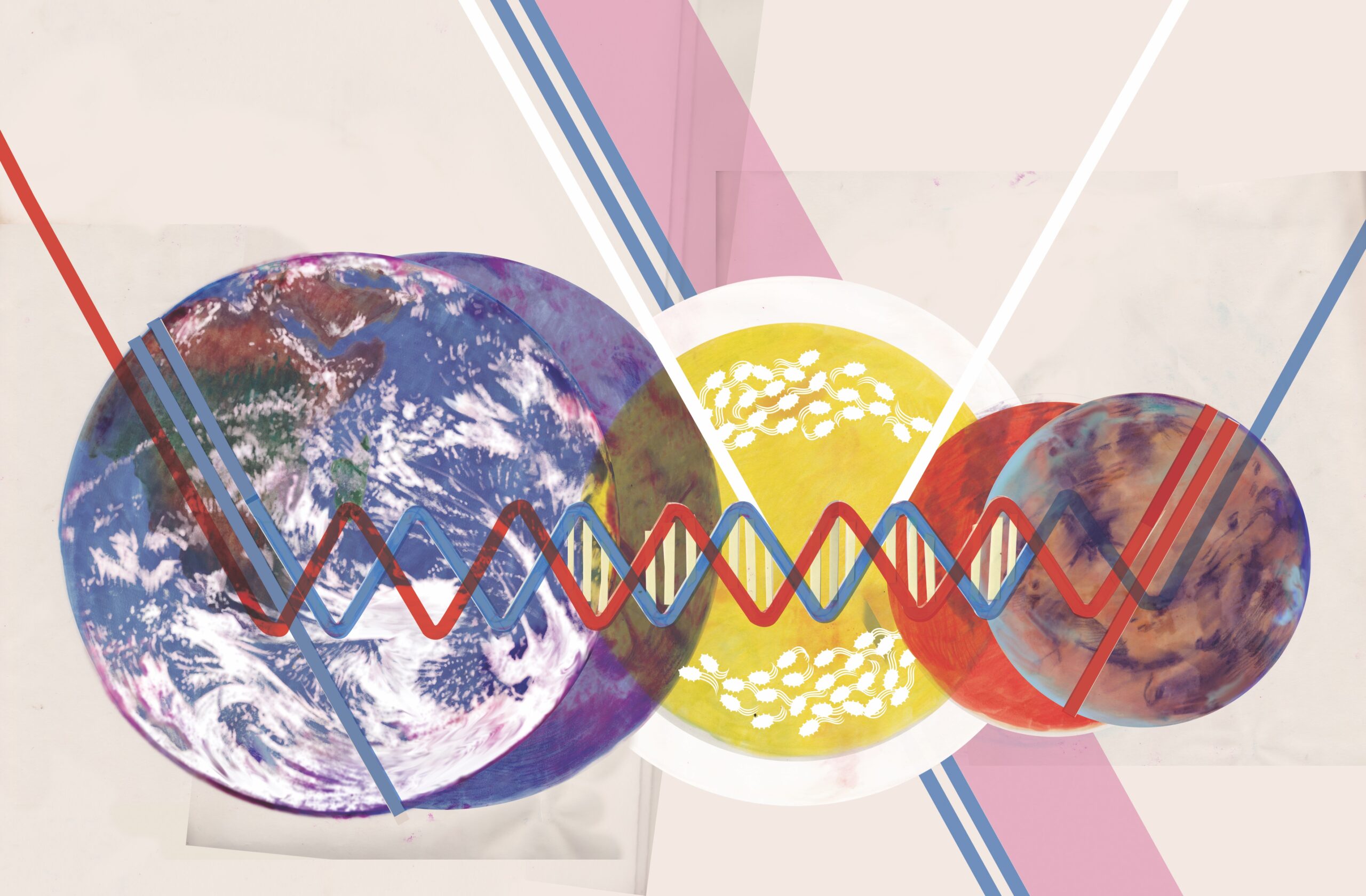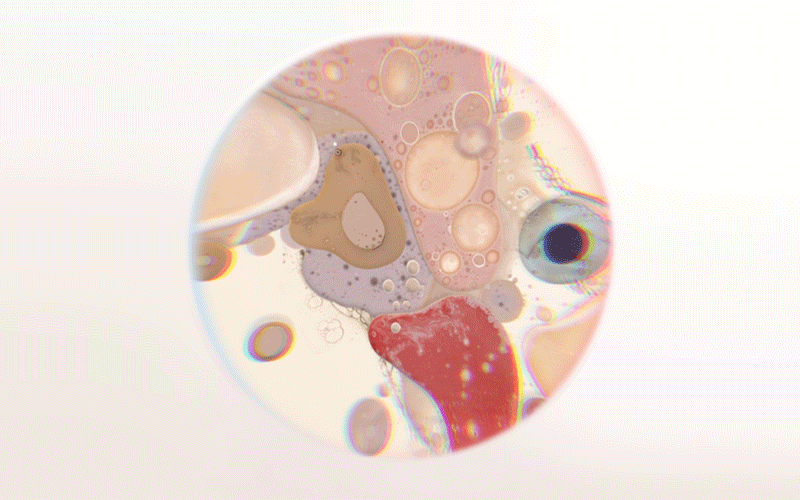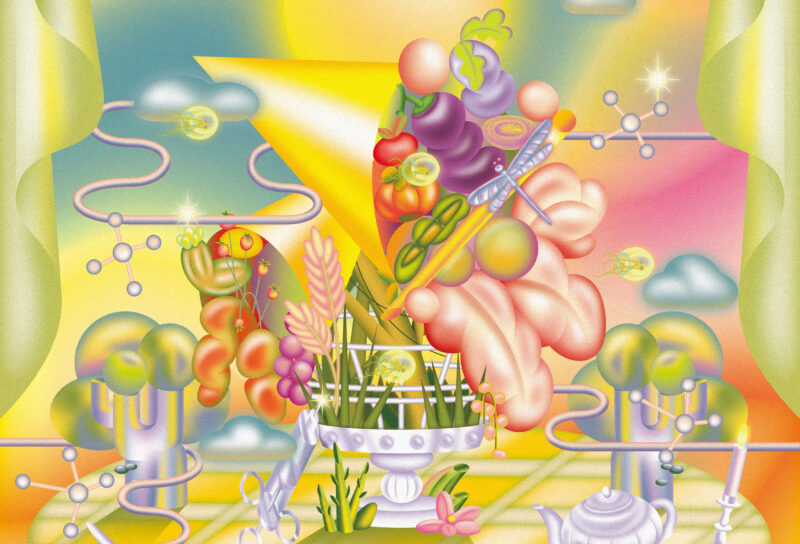Pushing molecular biology beyond what nature has arrayed, synthetic biologists are starting to demonstrate on earth what astrobiologists have long expected to discover in space: that life as we know it is only a tiny subset of endless possible combinations of chance and selection. While synthetic biology and astrobiology might at first seem to be radically different fields, at root they are part of the same project, seeking to understand the prospects for life as it could be. Indeed, as we shall see, some of the same scientists who envisioned what we might encounter on other planets were directly involved in envisioning how we could engineer life for our own purposes here at home. These visionaries of the space age primed us for this era of synthetic biology.
1.
“Evolution,” Julian Huxley wrote in 1931, “is one long sermon on the text of the infinite plasticity of living matter.” One of the premier science communicators of his day, whose expertise ranged from birds to axolotls in the literal zoo he called home, the celebrated English naturalist came to the conviction that the task of engineering life could not be left to nature alone. By 1953, Huxley felt it was high time for human ingenuity to be brought to bear in “ever-fresh realizations of new possibilities for living substance…leading life into regions of new evolutionary opportunity.”
As one of the main architects of the modern evolutionary synthesis, he had long sought to bring heredity and evolution together. “Man finds himself in the unexpected position of business manager for the cosmic process of evolution,” Huxley noted: “the destiny of man on earth” is nothing less than “to be the agent of the world processes of evolution, the sole agent capable of leading it to new heights, and enabling it to realize new possibilities.” Huxley located synthetic futures for biology on Earth within a larger cosmic story of innovation.
For Huxley’s long-time friend, the geneticist H. J. Muller, the larger history of life on Earth and its future cosmic prospects began with the most remarkable material of heredity itself: the chromosomes. Having won the Nobel Prize for his early work showing that X-rays cause mutations in fruit flies (and by extension, in all living organisms), Muller wrote a manifesto, Out of the Night (1935), in which he predicted that modifying chromosomes would be part of the future of biology. Using the metaphor of a cord or thread to describe the history of “organic evolution on the earth,” where each yard stood for 10,000 years, Muller described a human generation as the spatial equivalent of an aspirin tablet:
“This is just equal to the volume of hereditary material which actually is contained in one generation of mankind, and which is to be passed on to the next generation….Hence our cord…may be taken as representing in a certain real physical sense the evolving germ plasm of ourselves and our ancestors….Within this cord the fine fibers represent the chromosomes themselves, which are in fact filamentous bodies that intertwine, separate, and reunite in diverse ways as they pass along from generation to generation in the varying combinations resulting from sexual reproduction.
At any given place there is but a single one, out of all the mass of cords, which has led on so as finally to issue in our branch; this may be distinguished, in our figurative representation, by giving it a red color. It is this red cord which may be regarded as the red ‘thread of destiny,’ in a rather literal sense. Its free end is even now being spun further, being transfigured by mutation, being twined and interwoven, to give a new sort of living world, dependent on its new properties.“
Muller believed that the thread of evolution and heredity could be re-woven by human hands—that life on Earth was a substrate for other possible biological futures, both on Earth and elsewhere. Among the first to envision vast prospects for genetic engineering, Muller even wrote at length about what the modifiability of life’s threads of destiny might mean for “life forms to be expected elsewhere than on Earth.”
2.
One day, a few years after he had won the Nobel Prize, Muller received a letter from a precocious 23-year-old by the name of Carl Sagan. Muller, the geneticist and biological engineer, and Sagan, the budding planetary scientist and astrobiologist, were equally fascinated by the prospects for life both here on Earth and elsewhere. They spent their time together exchanging scientific theories and fictional visions of biological possibility, repeatedly discussing the limits of human experience and the new forms of life otherworldly environments might hold.
Mars was a common theme in Muller and Sagan’s exchanges, and Sagan was nothing if not excited by the possibilities. In 1955, Sagan sent Muller a birthday card depicting Mars overlain by a red thread. On it, he wrote: “the red thread slowly weaves its way upwards.” Two years before Sputnik, the first artificial satellite, Sagan was already reweaving Muller’s red thread toward the prospects for finding life on the red planet—or perhaps transplanting life there from the pale blue one we call home.
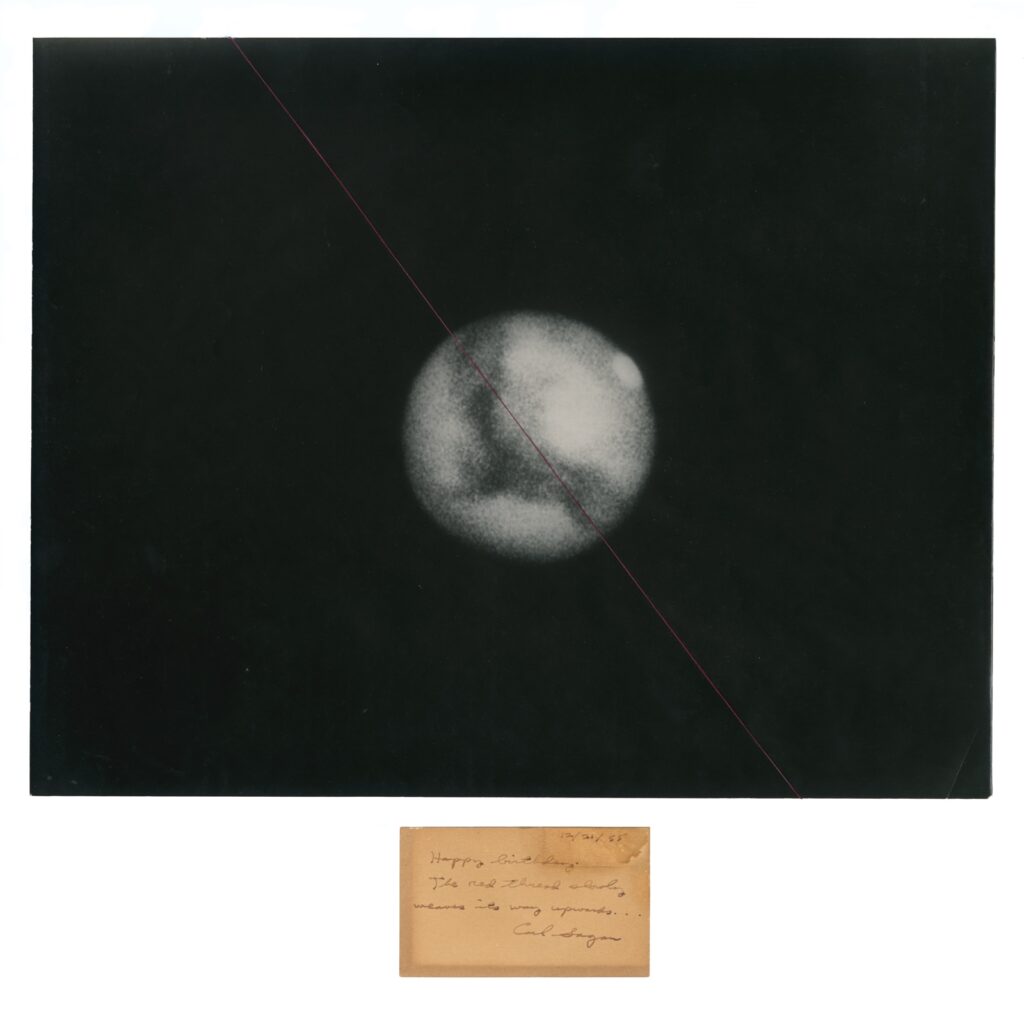
Credit: Courtesy The Lilly Library, Indiana University, Bloomington, Indiana.
When Sagan wrote about the birth of his first son in 1959, he even used Muller’s language to describe his own deeply personal experience: “It feels strange adding our fiber to the red thread. I’ve never before had so strong a feeling of being a transitional creature, at some vague intermediary position between the primeval mud and the stars.” Years later, after Muller himself passed away, returning to stardust, Sagan wrote to his widow, Thea, noting that he had had a crater on Mars named after his old friend.
Buried deep in the Library of Congress is a personal copy of Muller’s Studies in Genetics, stamped “Compliments of the Author,” and containing an inscription from Muller to Sagan:
“Here is a record of some explorations into the universe inside—explorations of a type now as common as a voyage across the Atlantic. But to us these trips were as wondrous as, in its day, Hanno’s circumnavigation of Africa. What a triumph it will be when we can coordinate and combine our outer and inner quests. Christmas and New Year’s greetings to you and yours for 1962-1963, and may we some day meet ‘in spirit’ on the tundras of Mars.“
That one of the most famous proponents of engineered futures for biology should be the mentor to one of the most famous proponents of life on other worlds is a remarkable testament to the long history of associations between the worlds of space and synthetic biology.
May we some day meet ‘in spirit’ on the tundras of Mars.
Synthetic and cosmic futures were intertwined for Muller, as they were for Huxley. No longer “confined to his planet of origin,” Muller wrote, humans would soon be “adventuring upon other planets” where the “jobs of external creation will have begun in earnest.” But apart from “reaching Mars and in probing into the nature of its organisms”—which would otherwise be “the most exciting story in the exploration of life that has ever happened to man”—the most compelling development of the day was what is “going on right now in those laboratories of ours where biochemists and geneticists are disentangling the warp and woof of which our own earthly life is composed.”
In other words, the outer astrobiological possibilities were mirrored by inner ones: “we too contain, within each one of us, a veritable universe … an inner world to understand and to administer, a world no less intricate, and no less directly important to us all.” The synthetic biologist would also be able to turn life to his own advantage here on Earth and “take the red cord of life, the thread of destiny, from the hands of Clotho, and spin it for himself…”
Muller’s dreams of biological possibilities—of life as it could be—extended from astrobiology to synthetic biology, not to mention eugenics. There were “new opportunities” afoot in the 1950s, Muller felt, with “the strange winds that are now blowing in from the atom, the gene, and outer space.” Reaching from the primeval mud to the stars, “we transitional creatures,” he wrote, “must not shrink from our destiny or fear it” but must work “in functional alliance with our genes” so that “evolution will become, for the first time, a conscious process…That will be the highest form of freedom that man, or life, can have.” Echoing Huxley’s assertion that, for humans as “the agents of further evolution, there can be no action higher or more noble than raising the inherent possibilities of life,” Muller transformed proper management into a moral duty, using the sublime language of a higher calling:
It is up to us to do our bit…and to use what we know constructively….Our reward will be that of helping man to gain the highest freedom possible: the finding of endless worlds both outside and inside himself, and the privilege of engaging in endless creation.
While nature was inherently fascinating, Muller was interested in going beyond what was extant to explore “the wondrous potentialities of development thus disclosed in life forms,” “the basic possibilities of living things,” and the synthetic biological prospect of “remolding the life forms around us.” If we find a way to put our wishes “in harmony with biological possibilities,” he concluded, “the world of plants and animals should be increasingly ours to remold as we choose.” Muller even predicted that the time would come when even our “machines” will be “more like living organisms.” Biology held otherworldly potential.
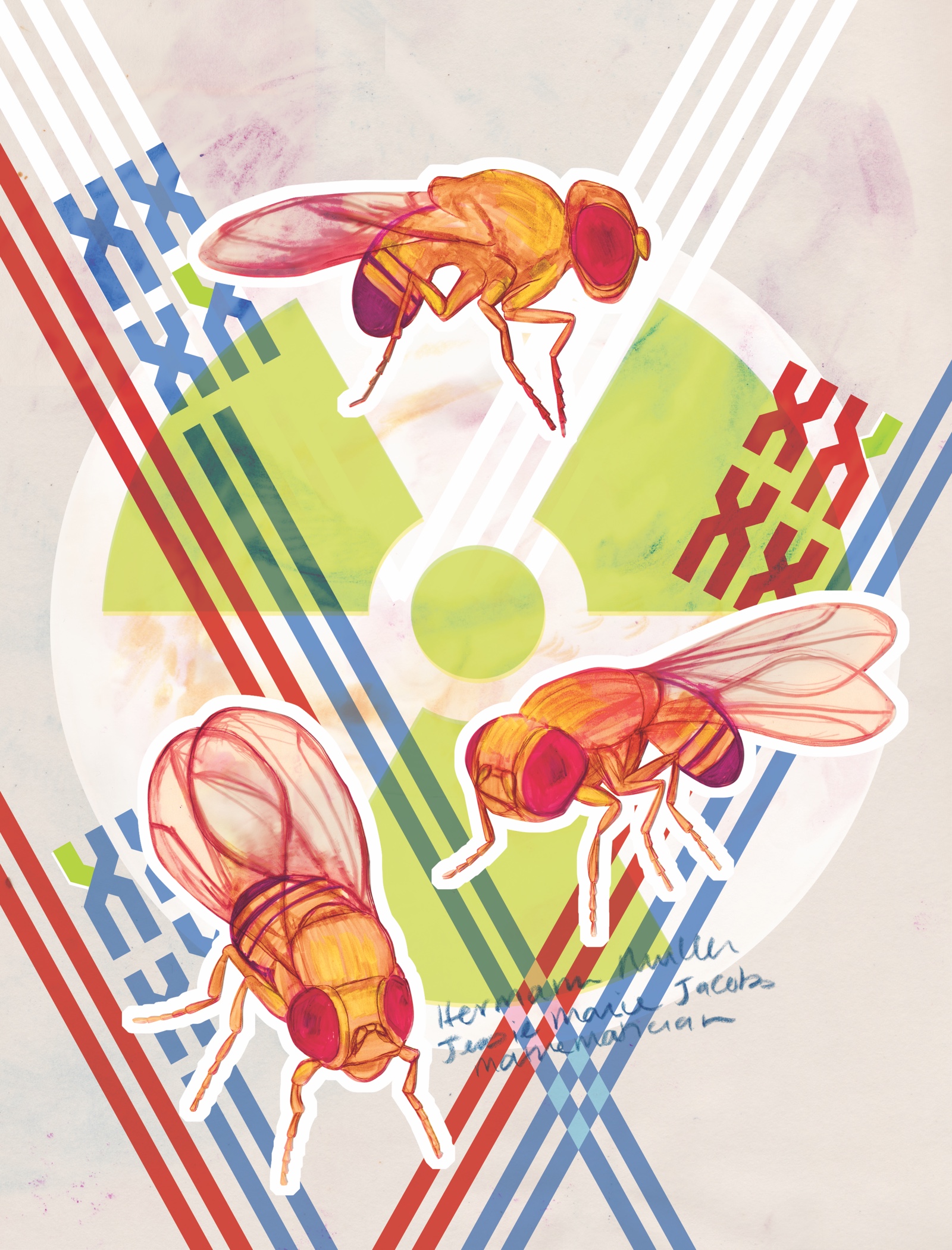
3.
While Edward Teller, the father of the hydrogen bomb, had advocated the launching of a payload of algae, bacteria, and protozoa on a rocket bound for Mars in 1949 as “insurance in case an atomic war terminates life on Earth,” Muller’s vision was more exploratory than repository—a field for opportunity rather than a back-up for failure. Fighting against the Cold War tendencies of the era, and lecturing just a month after the launch of the first Soviet satellite in 1957, Muller spoke publicly of the need for international cooperation in this quest: “The world cannot afford to allow to individual countries their separate genetic sputniks!” And so, Muller felt in 1959, new discoveries were to be made on Mars:
Surely we will get to Mars within the next generation, to be conservative, if we do not have nuclear war. Surely, considering the inhospitality of Martian conditions, we will find that life has not evolved nearly as far or become nearly as abundant or diverse, as on the earth.
Will it too have its basis in some kind of genetic nucleic acids? If I could be put into a deep freeze and thereby live until that day, I would wager being dropped in boiling oil if it were not composed of nucleic acid. Beyond that anyone would be rash to predict the chemistry, morphology and physiology of that life on its upper levels….This will be one of the most fascinating fields for the biologist, biochemist and geneticists of one or two generations hence.
Muller was as fascinated by the natural possibilities as by the synthetic biological ones: “In many other worlds besides ours, living matter must co-exist,” he wrote, “and that in the star-bespattered abysses of the cosmos there must surely dwell a myriad exotic forms…” In an essay written a couple of years later, Muller even wondered if “our Earth in turn may be poor in life compared with what exists on some of the even more favoured planets of other stars.”
For many other scientists in the immediate post-Sputnik era, the final frontier raised similarly inescapable and fundamental questions about biology. The American microbial geneticist and Nobel laureate Joshua Lederberg, who had just coined word “exobiology” in 1959, wondered how space exploration might relate to the earthly biology with which he was more familiar: “The prime questions of exobiology, life beyond the earth,” Lederberg wrote, “concern molecular biology. Do the Martian organisms use DNA and amino acids as we do, or are there other solutions to the basic problem of the architecture of evolution?” Might space itself be a vast cosmic laboratory of nature’s own efforts at synthetic biology? If we might, echoing both nature and Darwin, engineer “endless forms of life most beautiful” here on this planet, then what untold worlds of biodiversity might exist on habitable elsewheres?
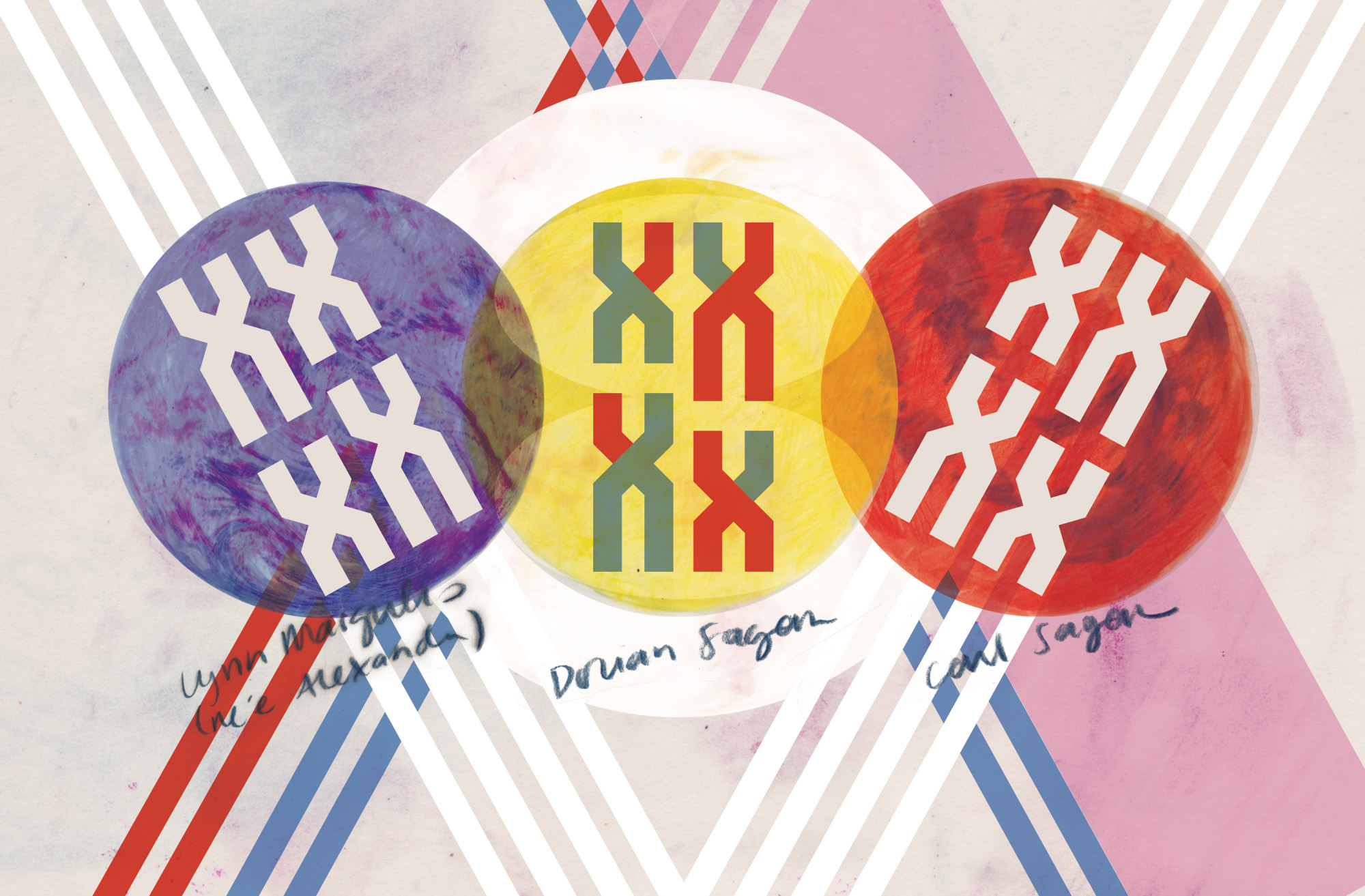
4.
Even as astronomy projected the astronomical possibilities for life in other celestial abodes, life on earth—with its many systems of heredity and their mutations and countless niches and adaptations—held astronomical combinatorial possibilities within itself. As Sagan would later write in Contact (1985): “this isn’t a job for an old-time tool-and-die maker. And you’re going to need something like genetic engineering.” But while vast possibilities for redesigning life still remain theoretical—might there be other molecular platforms for life?— surely not everything is possible. The question for the business manager of cosmic evolution in the 1950s remains as provocative today as it was decades ago: How to best explore the endless frontier, the panoply of biological possibilities, in a universe of unknown constraints?
History is full of curving horizons, often making it clear only at great distance and in retrospect that the ways we think about life as it could be—on Mars or in our laboratory—reflect as much about our moment in time as about the futures we envision. What form our current genetic sputniks will take is a thread still being woven. But as we explore the limits of life both in space and in synthesis, of reinvention and regulations, and of market share and morality, what’s clear is that today’s business managers, space explorers, and scientists are that much closer to meeting, and not only “in spirit,” on the tundras of Mars.
